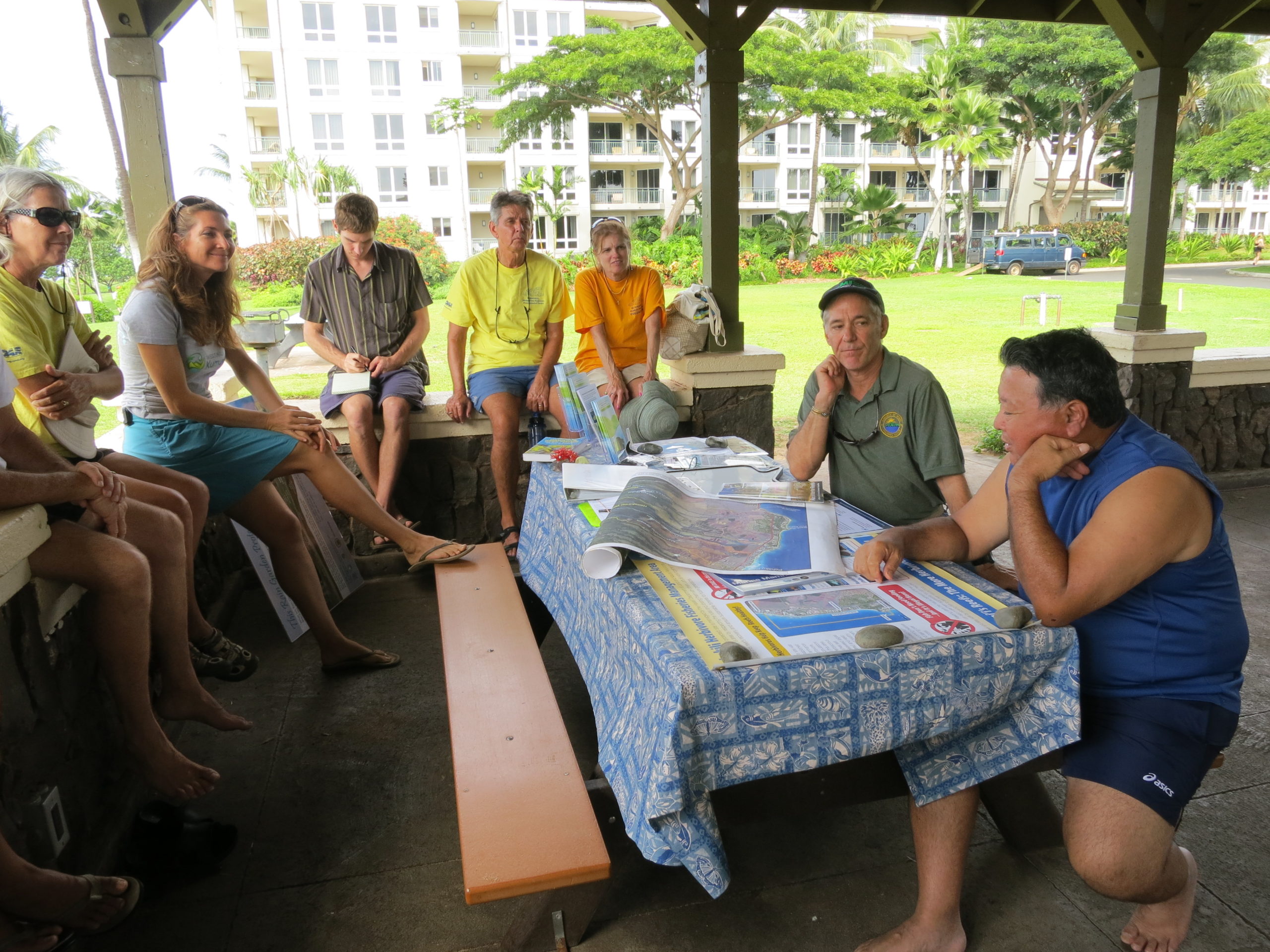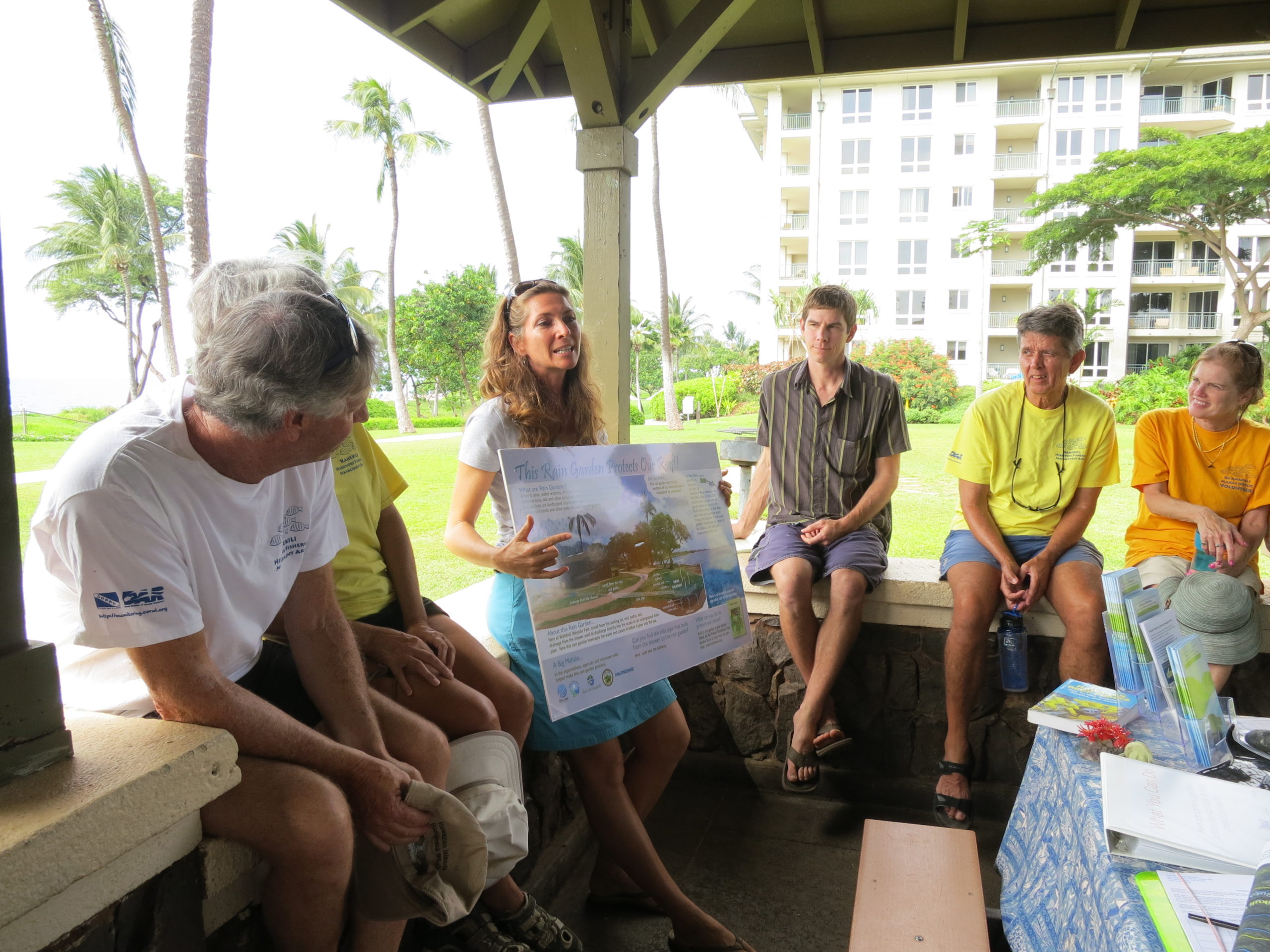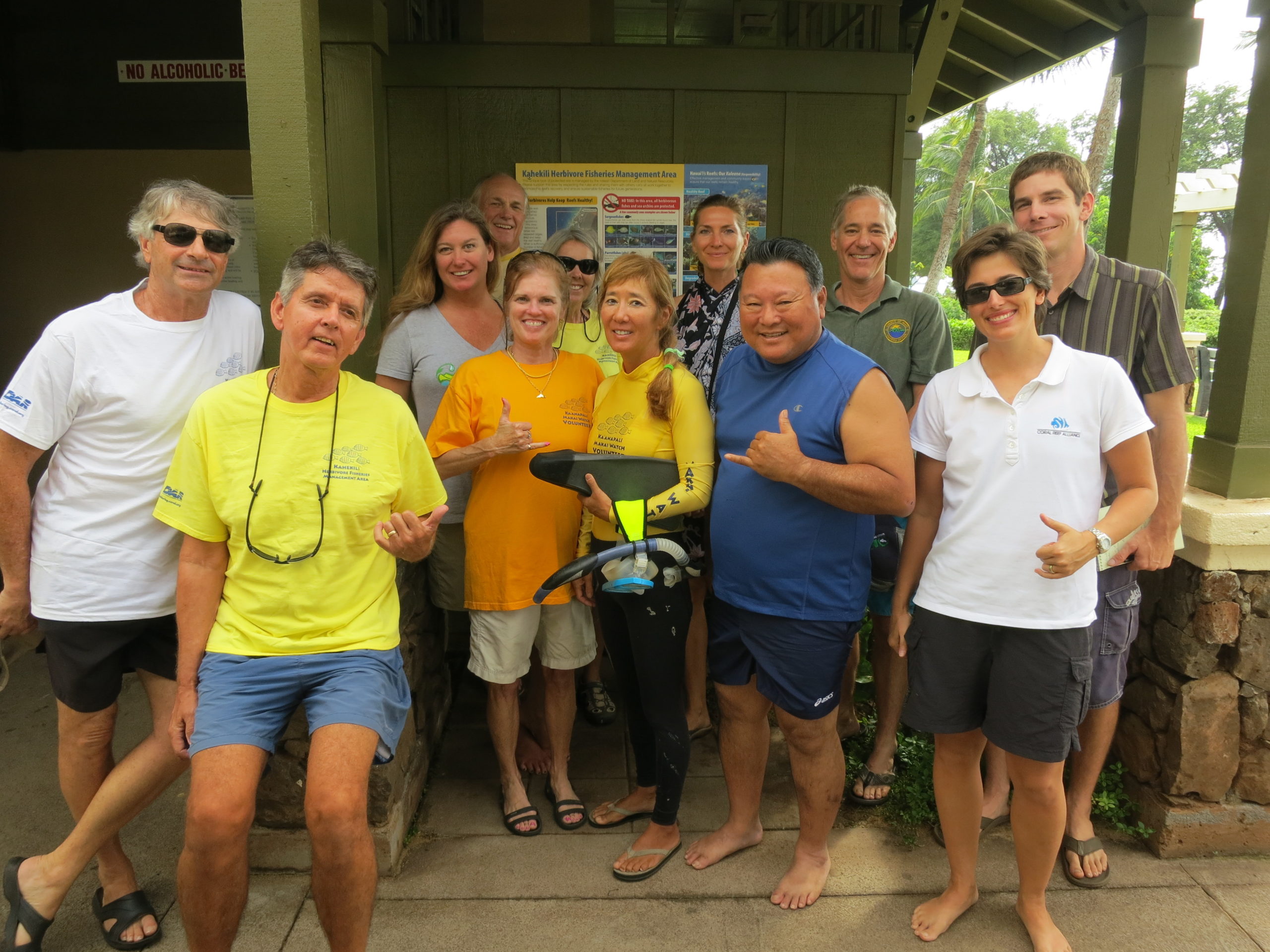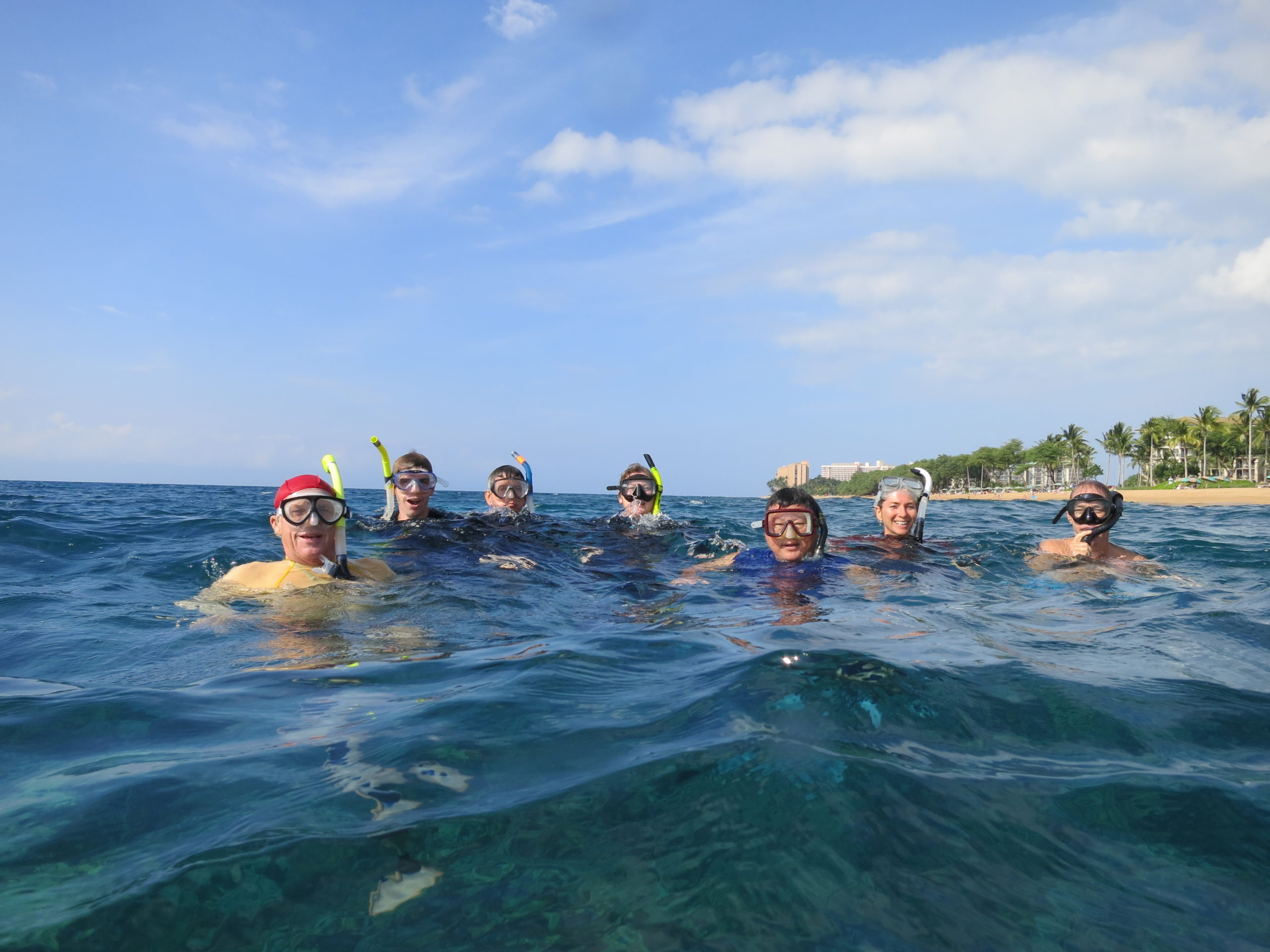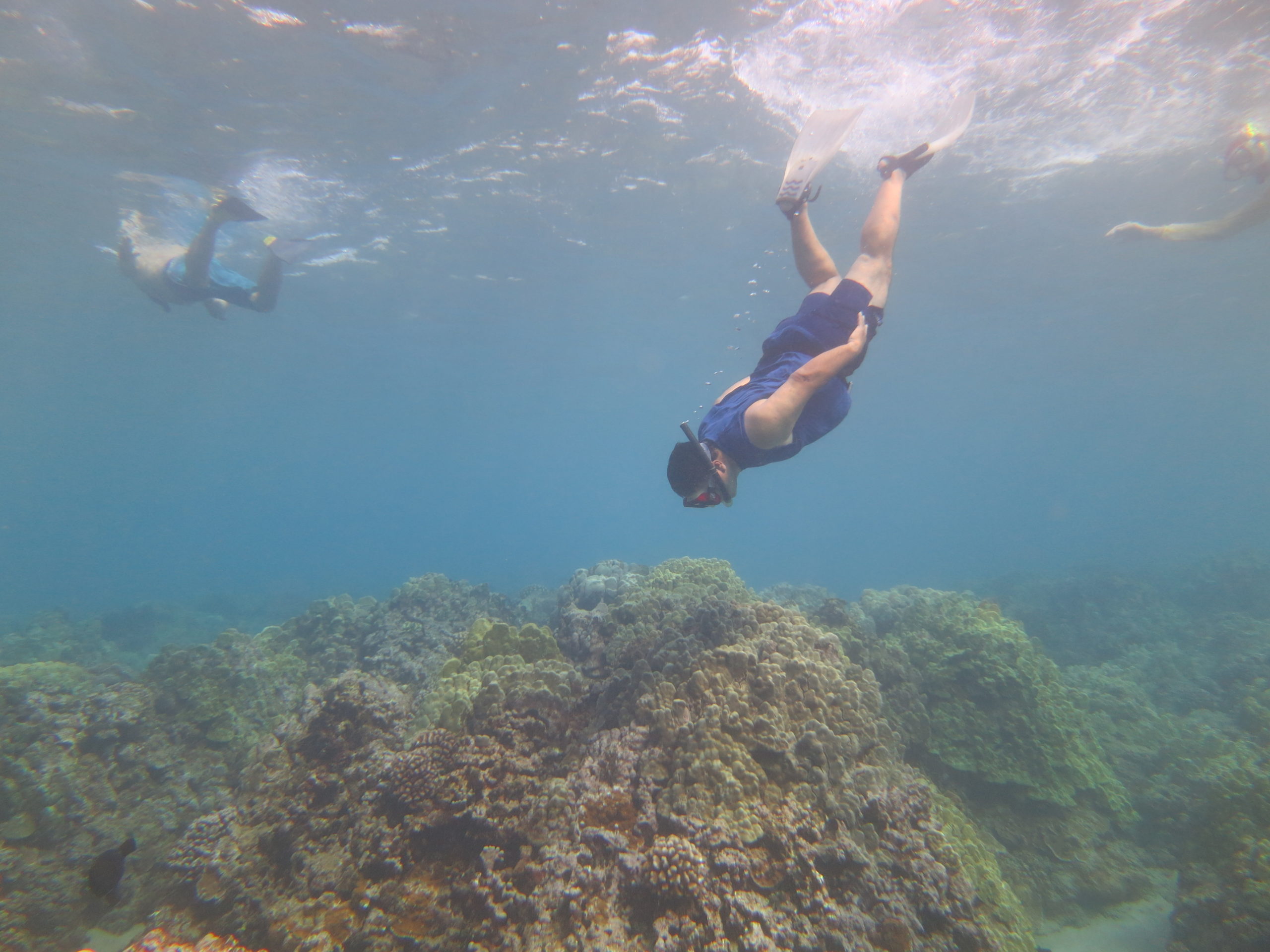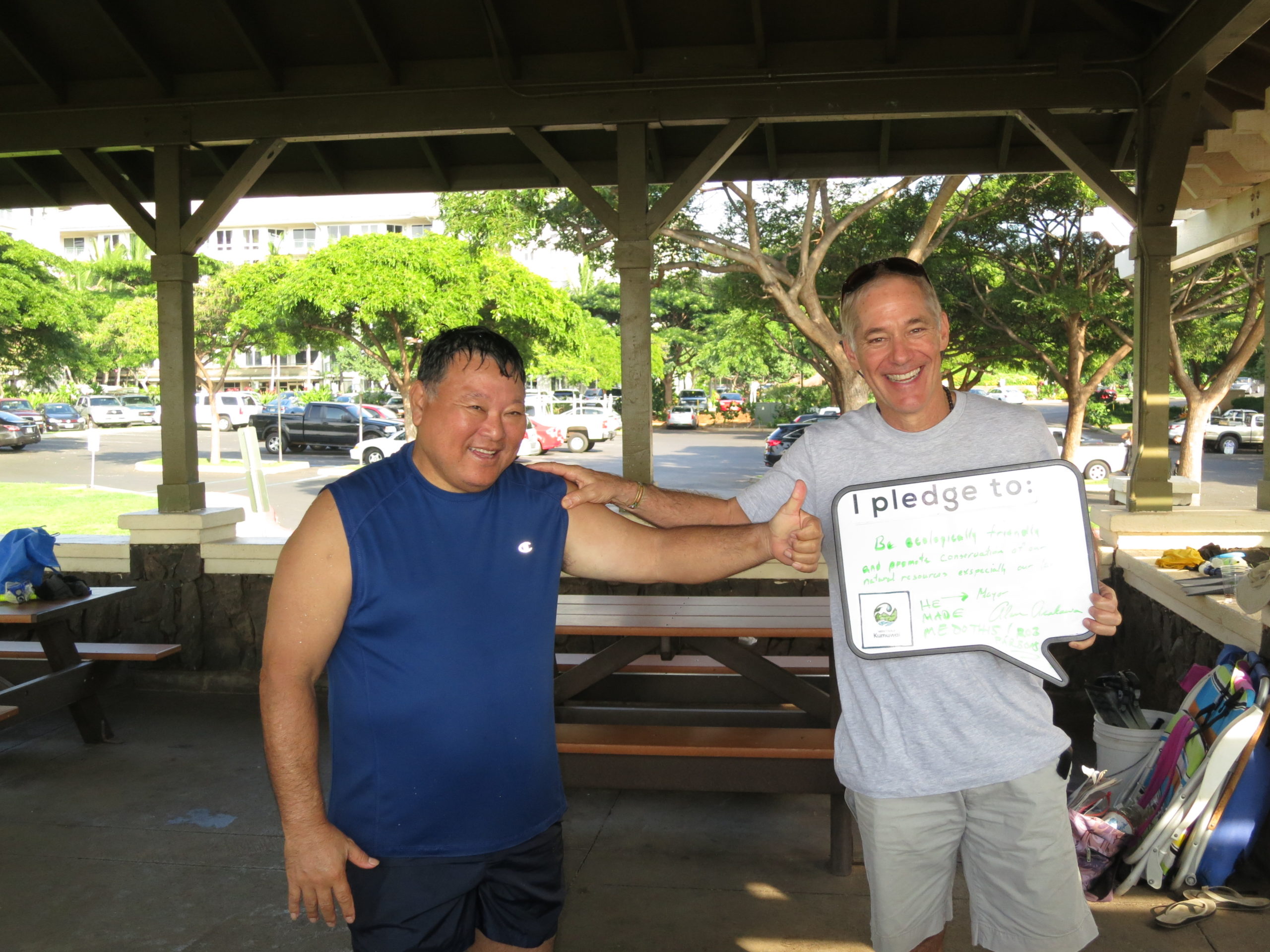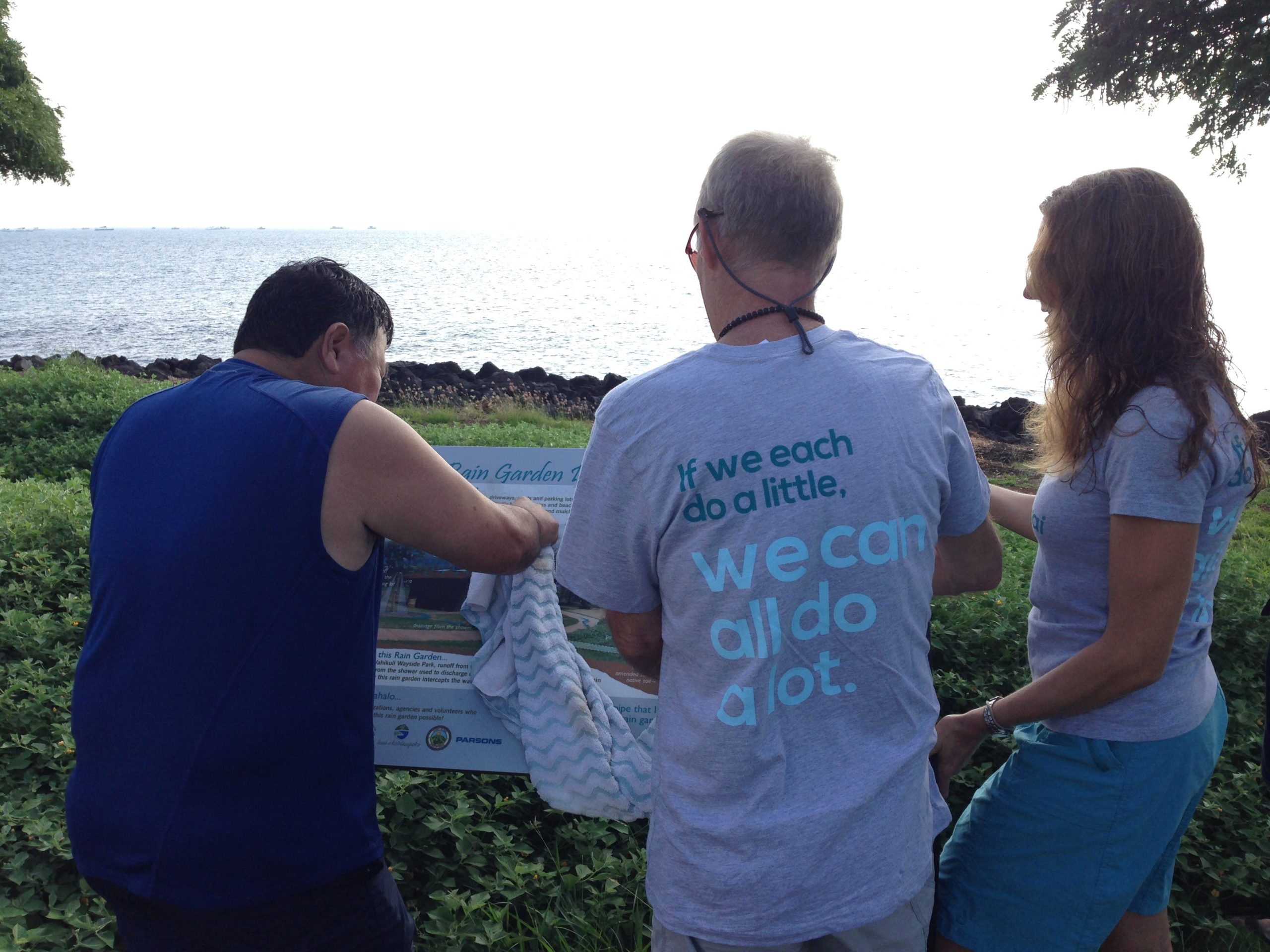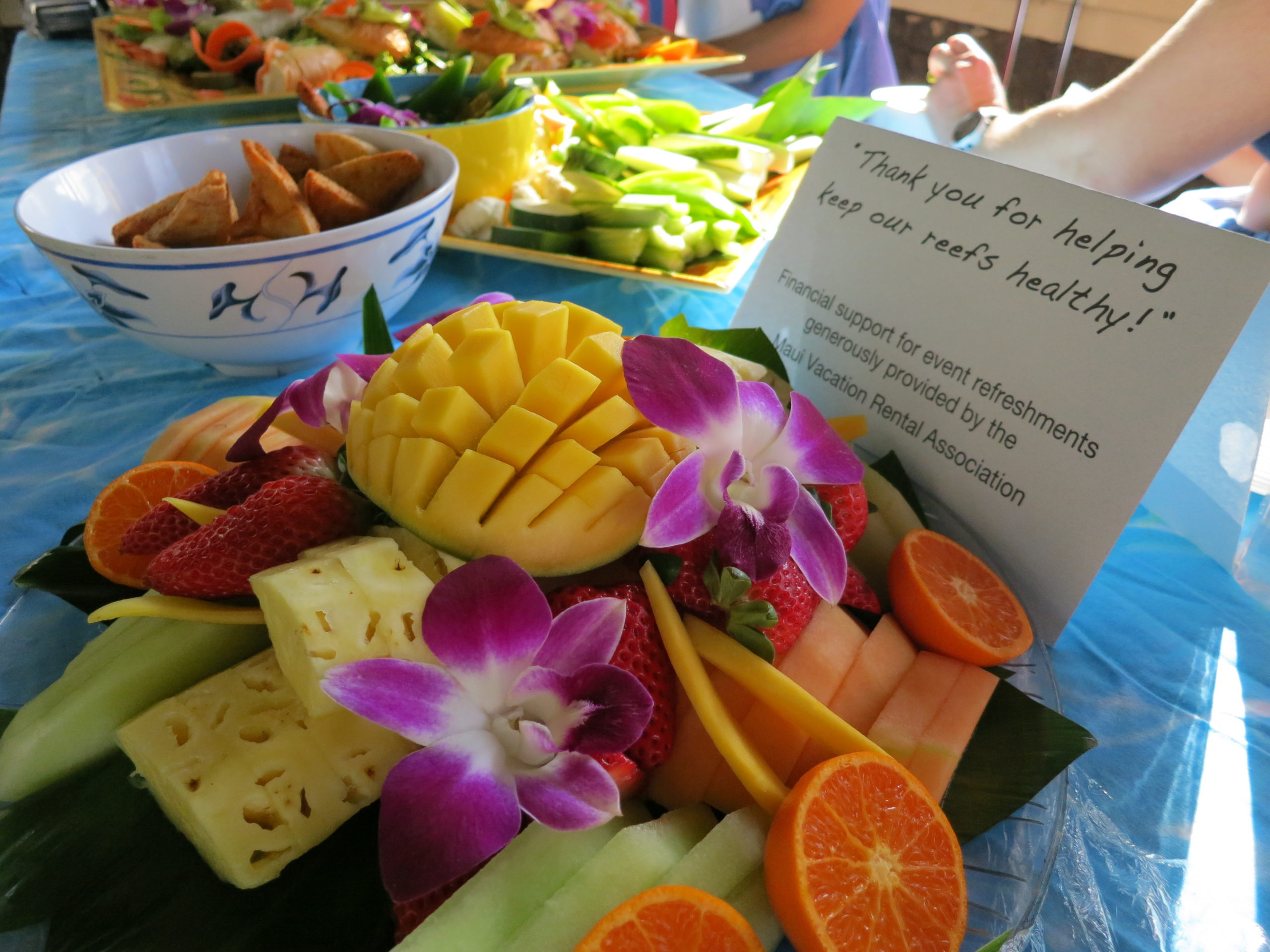On a beautiful and uncharacteristically calm afternoon in February, Maui County’s Mayor, Alan Arakawa, arrived at Kahekili Beach Park, barefoot and carrying a mask and fins in a bucket. Mayor Arakawa was eager to get in the water to dive with CORAL and our partners from the West Maui Ridge to Reef Initiative and the Hawaii Division of Aquatic Resources (“DAR”) to check out the reef. We had invited the Mayor and Rob Parsons, Executive Assistant for Environmental Concerns, to join us to visit priority watershed conservation sites in West Maui—primarily the Kahekili Herbivore Fisheries Management Area (“KHFMA”), designated by the US Coral Reef Task Force as a top priority. We wanted to see the reef firsthand and talk about solutions to the many interconnected threats facing our reefs.
As it turns out, our mayor is an avid waterman. He told us that he has dived reefs all over Maui throughout his life, but hadn’t been out diving in over a year and a half. We were thrilled to provide him with the opportunity to get in the water again. But first we wanted to give him a brief overview of our collaborative efforts.
I described CORAL’s work with resorts to promote reef stewardship and improve water quality, and the purpose of these snorkel tours (we’ll have more soon—stay tuned!), and our collaborative efforts with DAR, the Ridge to Reef Initiative, and the Ka‘anapali Makai Watch program, which we co-coordinate with DAR.
Tova Callender from the Ridge to Reef Initiative described the Initiative’s efforts to reduce land-based pollution by installing rain gardens and curb-inlet baskets, which capture and help filter urban pollutants and debris that find their way into storm drains, and ultimately the ocean. The mayor helped troubleshoot some issues with the curb-inlet baskets. We were encouraged by his eagerness to offer expertise and solutions, and his advocacy for ahupua‘a-based (watershed-based) management and conservation strategies.
Darla White, from DAR, discussed fisheries management strategies in West Maui, particularly the establishment and importance of the KHFMA. She also introduced the concept of reef resilience, then gave an overview of what to expect on the snorkel tour. And last but not least, our volunteer team from Ka’anapali Makai Watch talked about their experiences and observations within the KHFMA and their ongoing efforts to help get the word out to residents and visitors about this special place.
In the water, both the mayor and Rob displayed impressive skills as freedivers, and we were able to look closely at the “points of interest” Darla had discussed earlier. She pointed to things underwater and then we all surfaced to hear her describe them in more detail. She showed us several “dead zones,” where once-thriving finger coral is now a collection of low-lying brown rubble; we also made our way to the “bone yard,” where we could still see the three-dimensional structure of coral that had died recently—a haunting and sad reminder of the reef that once thrived there.
We also visited and swam through submarine seeps in shallow water just offshore that were visibly emitting fresh water (which researchers have determined consists primarily of treated wastewater effluent) as well as gas bubbles (determined to be nitrogen gas). While much of the tour highlighted stressed and degraded coral–and the reasons for that condition–we also saw relatively healthy coral colonies, a honu (green sea turtle), and positive signs of potential recovery, including some adult parrotfishes and a grazing school of about 100 surgeonfishes.
After the reef tour, we convened back at the pavilion to enjoy some refreshments, at which time the mayor and Rob took the West Maui Kumuwai Pledge to share their commitment to take action to reduce land-based pollution on an individual basis; we posted their pledges online immediately.
To wrap up the day, we headed over to check out the demonstration rain garden at Wahikuli Wayside Park only to find that our newly installed interpretive sign had been vandalized with graffiti. Mayor Arakawa grabbed a towel from his vehicle and cleaned the sign off, while Tova discussed rain gardens as a “BMP” (Best Management Practice) for reducing land-based pollution. Rain gardens use native plants to filter stormwater on its path to the ocean.
The trip was a great experience and opportunity for our team, and we appreciate the support of all the people who made it happen. We especially thank the mayor for taking so much time out of his busy schedule to join us.
Snorkel gear for the trip was provided by The Snorkel Store, and the Maui Vacation Rental Association helped provide refreshments for the event from CJ’s Deli & Diner—delicious! Mahalo to these local businesses for their support!

